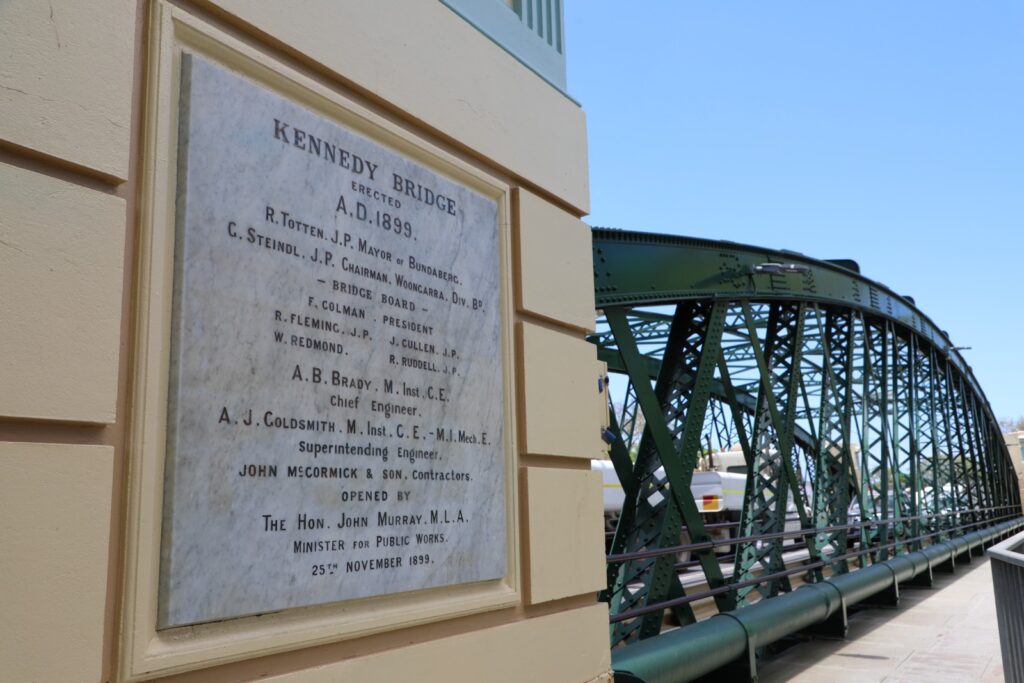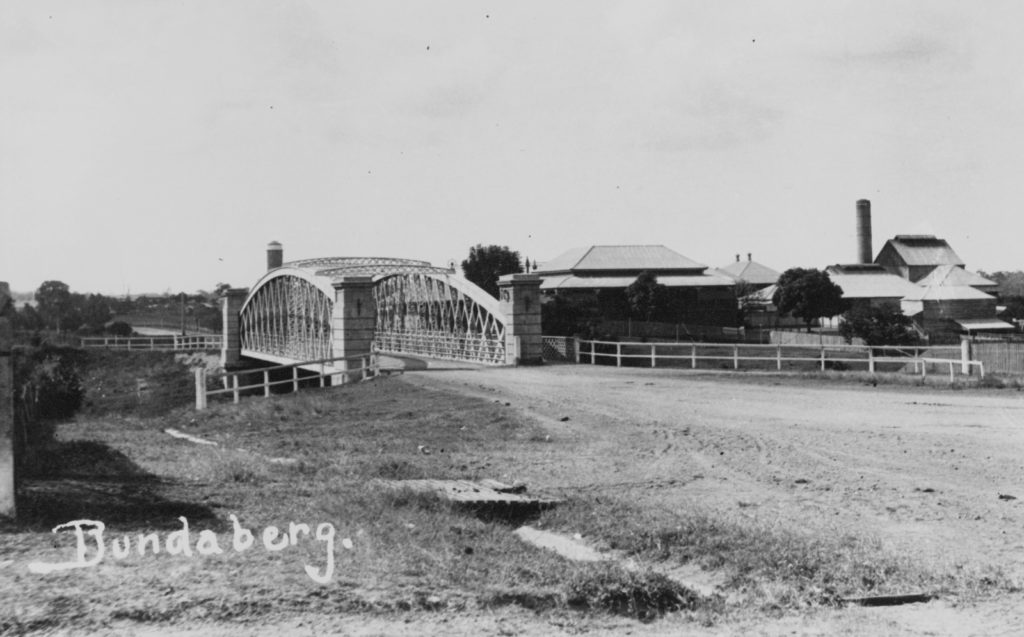
A shipwreck and a politician in the last legal hour of his ministerial duties are quirky links tied to the history of Bundaberg’s Kennedy Bridge.
Kennedy Bridge which has spanned Bundaberg’s Saltwater Creek for 121 years was opened by then Queensland Minister for Railways and Works, the Hon. J Murray on November 25, 1899.
At the opening, Mr Murray commented about the delay in construction, which he said was caused by the shipwreck of the Loch Fergus near Dublin on its voyage from Glasgow.
Mr Murray undertook the official opening of the bridge at 11am, just one hour before the Premier, Mr James Robert Dickson tendered the resignation of his Ministry due to censure motions and political upheaval.
In effect, opening the Kennedy Bridge was Mr Murray’s final act as a Minister.
Following the official opening of the bridge and subsequent banquet, the official party adjourned to the banks of the Burnett River to view progress on the new Burnett River Bridge.
Three spans of the bridge were largely in place as were all pylons associated with the construction. It was estimated that construction would be completed within 10 to 12 months.
The group then travelled by launch – “Victor” – on an inspection tour to almost the mouth of the Burnett River.
The quality of construction afforded the Kennedy Bridge was also reviewed prior to construction with the Brisbane Telegraph reporting the state government had reviewed the original loan terms which called for a “third-class structure with a loan period of 21 years”.
The bridge was reclassified to first-class and the loan to Bundaberg and Woongarra Councils extended over a period of 40 years.
Kennedy Bridge was constructed for a little under seven thousand pounds which equates to around $1.13 million in current Australian dollars.
Steel span replaced dangerous wooden bridge
Saltwater Creek was originally spanned by a timber bridge comprised of three sections and which was constructed in 1878.
However, heavy traffic crossing the bridge, principally aligned with the local sugar refining industry and sugar plantations, had seen the bridge become unsafe.
State Engineer for Bridges, Mr AB Brady, inspected the bridge in late 1896 and reported to the government on its deteriorating condition.

Mr Brady said the wooden bridge which connected the municipality of Bundaberg and the division of Woongarra was of a very poor construction.
“Generally, the main span is in a very shaky and dangerous condition, and is, in my opinion, unsafe for anything but light traffic.
“All traffic is rightly restricted to a walking pace when crossing the bridge, but loads heavier than 4 tons, exclusive of the wagon, should not be allowed, and only one such loaded wagon should be permitted’ on the bridge at a time,” reported Mr Brady.
He proposed that a single span steel bridge be constructed on the upstream side of the existing wooden structure with the span to be 160 feet (49m) long and 25 feet (7.3m) wide with a single lane pedestrian walkway.
Mr Brady also recommended the new bridge be raised about one metre above the height of the old wooden structure.
A local committee, the Kennedy Bridge Board, charged with selecting the site for the new bridge was provided with three options with the current option selected because of the alignment with Bourbong Street.
Local business and transport interests were uninterrupted as the old bridge remained in use while the new bridge was under construction.
Bundaberg Now acknowledges the contribution of Mr Merv Hopton in providing historical notes associated with the Kennedy Bridge.





Very interesting history by Mr Merv Hopton. Keep up the good work ????
Why did they name this bridge Kennedy Bridge